Nutrients Every Senior Needs and How to Get Them
As we grow older, our bodies and lifestyles inevitably change—and so do our nutritional needs. Getting the right nutrients becomes more important than ever for maintaining energy, supporting cognitive health, and preserving independence. With age, our metabolism slows, muscle mass declines, and the absorption of certain vitamins and minerals can decrease. Optimal nutrition isn’t just about living longer—it’s about living well. By understanding which nutrients matter most and how to include them in daily meals, seniors can boost vitality, sharpen their minds, and enjoy a fuller, more active life. This guide will explore the essential nutrients every senior needs and practical ways to get them.
1. Protein

Protein is fundamental for healthy aging, playing a key role in preserving muscle mass, strength, and aiding recovery from illness or injury.
As we age, maintaining muscle becomes more challenging due to natural muscle loss (sarcopenia), making adequate protein intake essential for mobility and independence.
Both animal and plant-based proteins are excellent sources, but they offer different benefits.
Lean meats (chicken, turkey, fish) provide complete proteins with all essential amino acids.
Dairy products like Greek yogurt and cottage cheese offer protein plus calcium for bone health.
Beans, lentils, and soy are powerful plant-based options, rich in fiber and micronutrients.
Animal proteins are typically more easily absorbed and complete, but plant proteins support heart health and digestive wellness.
Many seniors benefit from a mix, ensuring variety and balanced nutrition.
For guidance on how much protein older adults need, the Mayo Clinic offers helpful recommendations tailored to age and activity level.
Including protein in every meal can help seniors stay strong, active, and resilient.
2. Calcium

Calcium is the cornerstone of bone health, especially crucial for seniors who face a higher risk of osteoporosis and fractures.
As we age, our bodies absorb less calcium, and bone density naturally declines, making it vital to meet daily calcium needs.
Sufficient calcium intake helps maintain strong bones, reduces the risk of breaks, and supports muscle and nerve function.
Dairy products such as milk, cheese, and yogurt are classic, highly bioavailable sources.
Fortified plant-based milks (like almond, soy, and oat milk) offer an excellent alternative for those who are lactose intolerant or prefer non-dairy options.
Dark leafy greens like kale, collard greens, and bok choy provide plant-based calcium, though absorption rates may vary.
The National Osteoporosis Foundation recommends that adults over 50 aim for 1,200 mg of calcium per day.
Meeting these needs through a varied diet is ideal, but supplements can help when dietary sources fall short.
Prioritizing calcium-rich foods is key to maintaining mobility and quality of life for seniors.
3. Vitamin D

Vitamin D is a vital partner to calcium, enabling the body to effectively absorb and utilize this essential mineral for strong bones.
In addition to supporting skeletal health, vitamin D also plays a crucial role in immune system function, helping the body defend against infections and chronic disease.
As people age, their skin becomes less efficient at producing vitamin D from sunlight, and spending more time indoors can further reduce natural synthesis.
Sun exposure is a natural way to boost vitamin D, but even brief periods may not be enough for older adults, especially in northern climates.
Fortified foods such as milk, cereal, and orange juice can help bridge the gap.
Supplements are often recommended to ensure adequate intake, particularly for those at risk of deficiency.
According to the NIH Office of Dietary Supplements, adults over 70 should aim for 800 IU of vitamin D daily.
Regular blood checks can help guide supplementation needs.
Prioritizing vitamin D is essential for bone strength and a healthy immune response as we age.
4. Vitamin B12
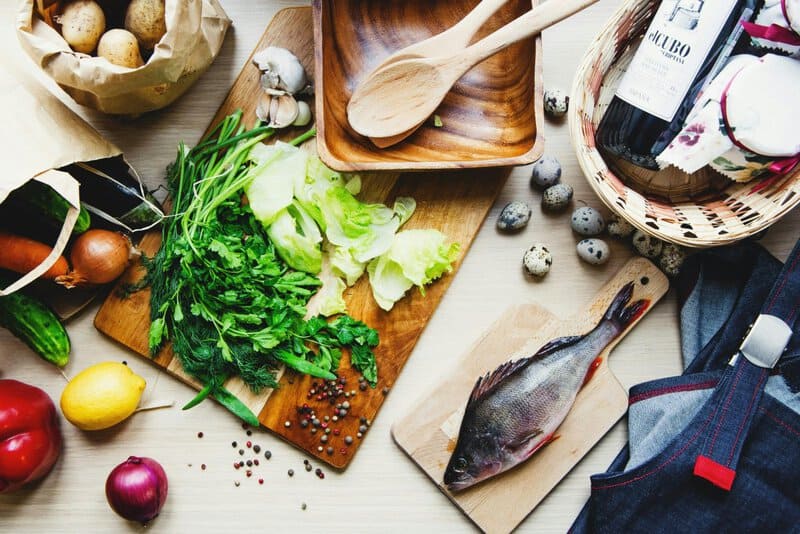
Vitamin B12 is essential for nerve health and red blood cell production, making it a key nutrient for seniors.
This vitamin supports cognitive function and keeps the nervous system running smoothly.
Unfortunately, the ability to absorb B12 from food naturally declines with age due to changes in stomach acid production, putting older adults at a higher risk of deficiency.
Symptoms of low B12 can include fatigue, memory problems, and even nerve damage.
Fish and seafood like salmon and tuna are excellent, highly absorbable sources.
Eggs and dairy provide B12, especially for those who limit meat intake.
Fortified cereals and plant-based milks offer vegan-friendly options, as B12 is not naturally present in plant foods.
According to the NIH Office of Dietary Supplements, adults over 50 are encouraged to get most of their B12 from fortified foods or supplements, since absorption from food alone may not be sufficient.
Regular screening and early intervention can help prevent complications related to B12 deficiency.
5. Fiber
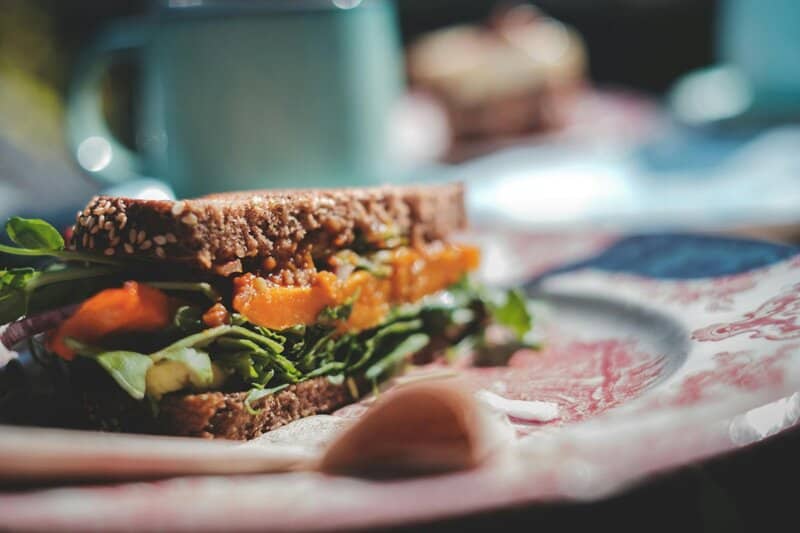
Fiber is a powerhouse nutrient for seniors, offering a range of benefits that go far beyond digestive comfort.
Adequate fiber intake helps promote regularity, preventing constipation, which is a common concern with age.
It also plays a major role in regulating cholesterol and blood sugar levels, helping to lower the risk of heart disease and type 2 diabetes—two conditions that become more prevalent with aging.
Whole grains such as oatmeal, brown rice, quinoa, and whole wheat bread are excellent sources of dietary fiber.
Fruits like apples, berries, pears, and oranges provide both soluble and insoluble fiber, along with antioxidants.
Vegetables including carrots, broccoli, and leafy greens add bulk and nutrients to meals, supporting overall gut health.
The CDC recommends that older adults aim for at least 21-30 grams of fiber each day, depending on age and gender.
Gradually increasing fiber and drinking plenty of water can enhance comfort and digestive health.
Making fiber a daily priority is a simple way to support longevity and vitality.
6. Potassium
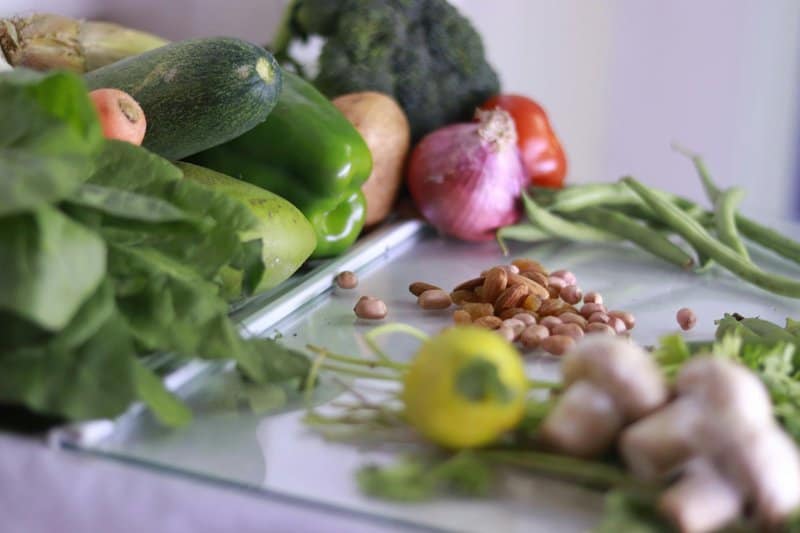
Potassium is a critical mineral for heart and muscle function, helping to regulate heartbeat, fluid balance, and nerve signals.
For seniors, maintaining adequate potassium intake can also help offset some of the negative effects of sodium, such as high blood pressure.
Balancing these electrolytes supports cardiovascular health and reduces the risk of stroke and heart disease.
Bananas are a classic, easy-to-digest source of potassium, perfect for breakfasts or snacks.
Potatoes (especially with the skin) and sweet potatoes deliver significant potassium in a versatile package.
Beans, lentils, and spinach offer plant-based options rich in potassium, fiber, and other nutrients.
The American Heart Association highlights the importance of increasing potassium while reducing sodium for optimal blood pressure control.
However, those with kidney issues should consult their doctor before making dietary changes, as excess potassium can be harmful in certain cases.
Striving for a potassium-rich diet, balanced with lower sodium intake, is a smart step toward a healthier heart and stronger muscles as we age.
7. Omega-3 Fatty Acids
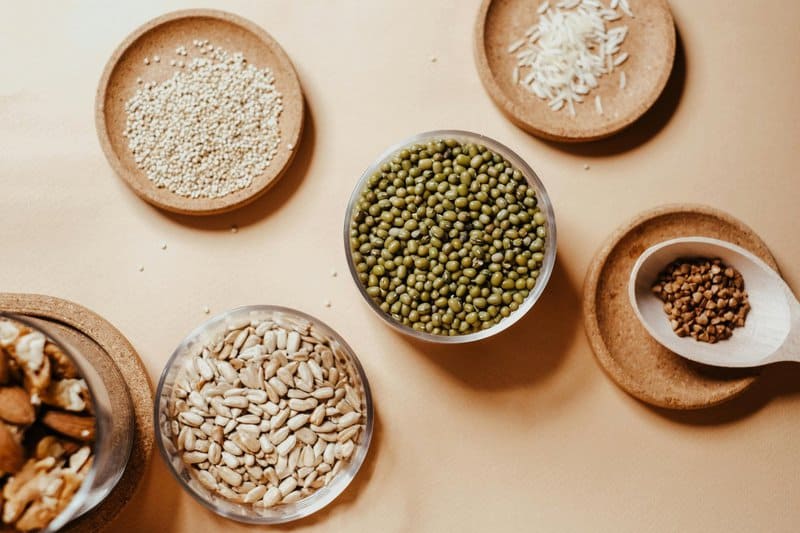
Omega-3 fatty acids are essential for both brain and heart health, making them especially valuable as we age.
These healthy fats help reduce inflammation, support memory and cognitive function, and lower the risk of heart disease and stroke.
Regularly including omega-3s in the diet can also help manage triglyceride levels and support overall cardiovascular well-being.
Fatty fish such as salmon, sardines, mackerel, and trout are the richest sources of EPA and DHA, the most beneficial forms of omega-3.
Chia seeds and flaxseeds provide plant-based alpha-linolenic acid (ALA), which the body can partially convert to EPA and DHA.
Walnuts offer another easy plant-based source, adding crunch and nutrition to salads, cereals, or snacks.
The American Heart Association recommends that adults eat at least two servings of fatty fish per week for optimal heart health.
For those who don’t eat fish, consider omega-3 supplements after consulting with a healthcare provider.
Including a variety of omega-3 sources can help seniors maintain sharp minds and strong hearts.
8. Magnesium

Magnesium is a vital mineral involved in hundreds of bodily processes, including nerve transmission, muscle contraction, and bone formation.
For seniors, magnesium supports a steady heartbeat, helps prevent muscle cramps, and assists in maintaining bone density alongside calcium and vitamin D.
Low magnesium levels can contribute to fatigue, weakness, and increased risk of osteoporosis or heart rhythm disturbances.
Nuts and seeds—such as almonds, cashews, and pumpkin seeds—are excellent, convenient sources of magnesium.
Legumes like black beans, chickpeas, and lentils offer magnesium along with fiber and protein, making them a smart choice for any meal.
Whole grains including brown rice, quinoa, and whole wheat bread provide magnesium while supporting digestive health.
According to the Harvard School of Public Health, many older adults do not get enough magnesium from their diets.
Gradually adding more magnesium-rich foods can help meet daily needs and support overall wellness.
For those with certain health conditions or on medications, consulting a healthcare provider about magnesium intake is a wise step.
9. Vitamin C
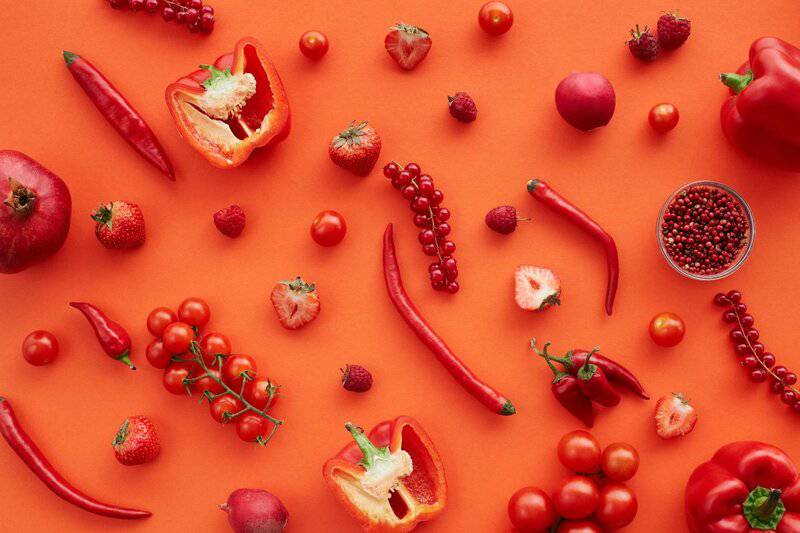
Vitamin C is a powerful antioxidant that plays multiple roles in supporting senior health.
It helps protect cells from oxidative stress, strengthens the immune system, and aids in the body’s ability to heal wounds.
As we age, maintaining a robust immune defense becomes more important, and vitamin C can help reduce the duration and severity of common illnesses.
Citrus fruits such as oranges, grapefruits, and tangerines are classic sources, providing a refreshing dose of vitamin C.
Bell peppers—especially red and yellow varieties—are rich in vitamin C and add color and crunch to salads, stir-fries, and snacking.
Strawberries, broccoli, and Brussels sprouts also contribute meaningful amounts, making it easy to meet daily needs through a varied diet.
The NIH Vitamin C Fact Sheet highlights its importance for older adults and recommends incorporating a range of colorful fruits and vegetables.
Including vitamin C-rich foods daily helps support immune health, skin elasticity, and overall vitality as we age.
10. Iron

Iron is crucial for transporting oxygen throughout the body and maintaining energy levels—tasks that become increasingly important as we age.
Inadequate iron can lead to anemia, resulting in fatigue, weakness, and reduced resistance to infections.
Iron needs may vary for seniors, especially for women after menopause and those with chronic health conditions, making regular assessment important.
Heme iron, found in animal products like red meat, poultry, and fish, is more readily absorbed by the body.
Non-heme iron, present in plant foods such as lentils, spinach, beans, and fortified cereals, is also valuable but absorbed less efficiently.
Pairing non-heme iron sources with vitamin C-rich foods (like citrus or bell peppers) can enhance absorption.
The CDC provides guidelines for daily iron needs and tips for preventing iron deficiency in older adults.
If you suspect low iron, consult your healthcare provider for testing and tailored advice.
Balancing iron intake through a diverse diet supports energy, immune health, and overall well-being in the senior years.
11. Zinc
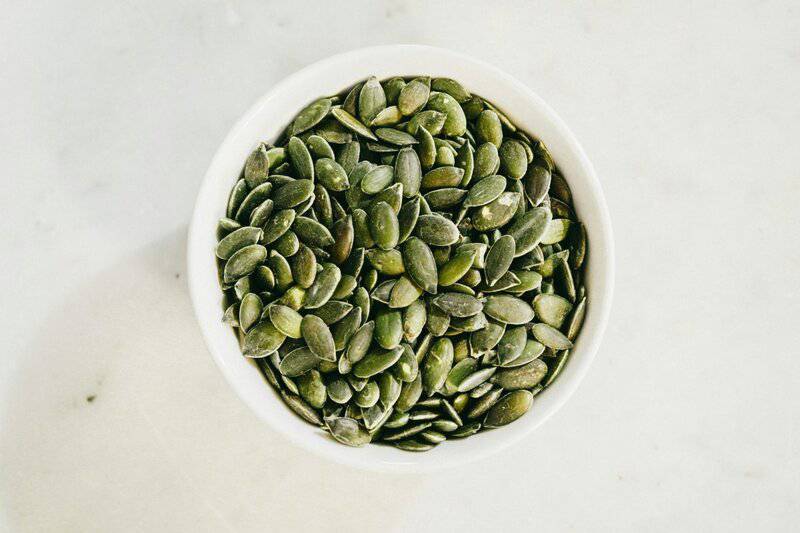
Zinc is a vital mineral for immune function and wound healing, both of which become increasingly important as we age.
This nutrient helps the body fight off infections, supports the production of new cells, and plays a role in taste, smell, and DNA synthesis.
Seniors are at higher risk for zinc deficiency due to decreased absorption and reduced dietary intake, which can lead to slower healing, increased illness, and loss of appetite.
Shellfish—especially oysters, crab, and lobster—are among the richest sources of zinc.
Beef and poultry provide easily absorbed zinc, making them valuable staples for meat-eaters.
Pumpkin seeds, chickpeas, and cashews offer plant-based zinc options suitable for vegetarians and vegans.
The NIH recommends that older adults pay close attention to their zinc intake, as even mild deficiencies can impact immune defense and wound recovery.
Including a variety of zinc-rich foods in the diet is a practical step toward maintaining resilience and overall vitality in the senior years.
12. Folate (Vitamin B9)

Folate, also known as vitamin B9, is essential for cell repair and the formation of DNA, making it a key nutrient for healthy aging.
Folate also supports heart health by helping to regulate homocysteine levels in the blood, which, if elevated, can increase the risk of cardiovascular disease.
For seniors, adequate folate intake is vital for keeping cells healthy, supporting cognitive function, and lowering the risk of certain chronic illnesses.
Green leafy vegetables like spinach, kale, and romaine lettuce are excellent sources of natural folate.
Beans and lentils supply both folate and fiber, making them an ideal addition to soups, salads, or side dishes.
Fortified grains such as breakfast cereals and enriched breads are often supplemented with folic acid, the synthetic form of folate, to help meet daily needs.
According to Harvard Health, seniors should aim to meet their folate needs primarily through a varied diet rich in vegetables, legumes, and whole grains.
Ensuring regular intake of folate can promote heart health, support brain function, and aid in healthy cell renewal.
13. Vitamin A

Vitamin A is crucial for maintaining healthy vision and supporting immune function, two areas that often require extra care as we age.
This fat-soluble vitamin helps keep the eyes, skin, and mucous membranes in optimal condition, and it also plays a role in cell growth and differentiation.
Seniors with insufficient vitamin A intake may experience night blindness, dry eyes, or a weakened immune response.
Carrots and sweet potatoes are rich in beta-carotene, which the body converts to vitamin A as needed.
Dark leafy greens like spinach and kale also offer significant amounts of beta-carotene along with other antioxidants.
Dairy products such as milk, cheese, and eggs provide preformed vitamin A, which is readily absorbed and utilized.
For more guidance, the NIH Vitamin A Fact Sheet explains that older adults should be mindful of both deficiency and excess, as too much vitamin A from supplements can be harmful.
Focusing on a variety of colorful fruits, vegetables, and moderate dairy helps ensure healthy vision and a strong immune system for seniors.
14. Vitamin E
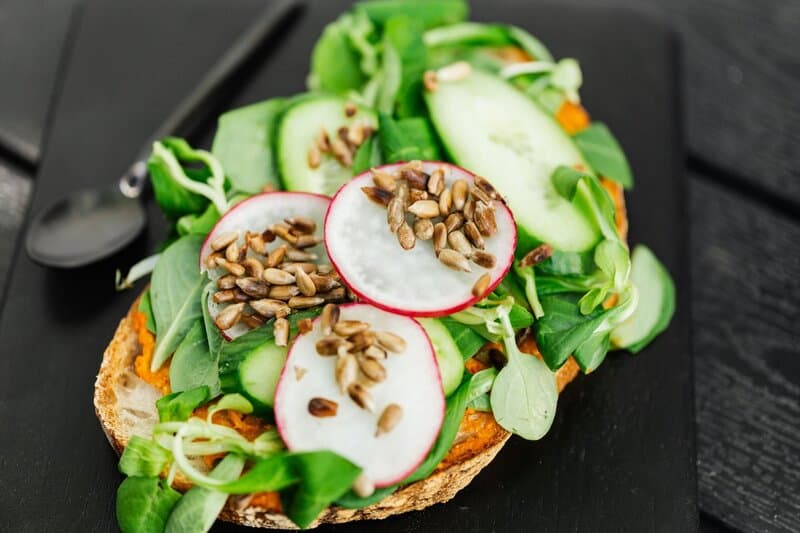
Vitamin E stands out for its antioxidant properties and its role in protecting cells from damage, which is increasingly important as we age.
This nutrient helps combat oxidative stress, supports immune function, and contributes to healthy skin by preventing dryness and enhancing wound healing.
Seniors often benefit from vitamin E’s ability to support overall wellness and promote a youthful, resilient complexion.
Nuts and seeds—such as almonds, sunflower seeds, and hazelnuts—are rich, convenient sources of vitamin E.
Vegetable oils like sunflower, safflower, and wheat germ oil are excellent for both cooking and salad dressings.
Green leafy vegetables such as spinach and Swiss chard provide additional vitamin E, rounding out a balanced diet.
The Mayo Clinic recommends meeting vitamin E needs through food rather than supplements, as excessive supplementation can have adverse effects.
By choosing a variety of vitamin E-rich foods, seniors can nourish their skin, bolster immunity, and protect cells against age-related decline.
15. Water
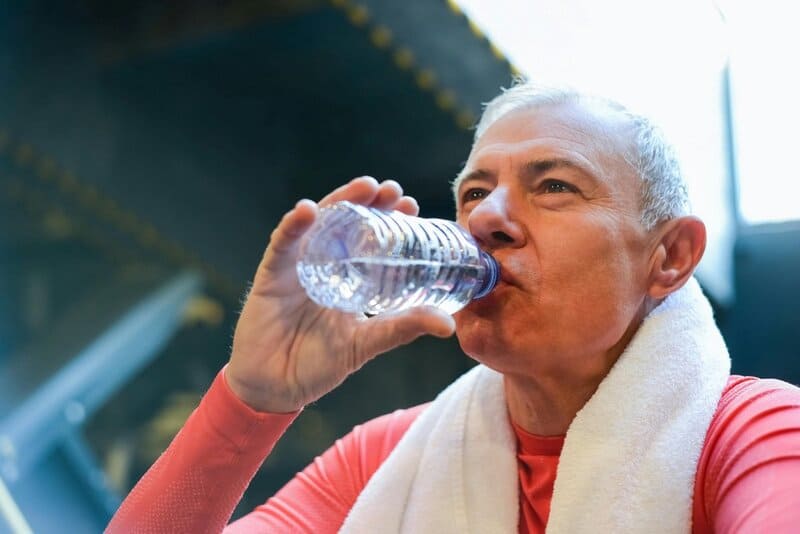
Water is the foundation of all bodily functions, from digestion to temperature regulation and joint lubrication.
As we age, the body’s sense of thirst naturally diminishes, increasing the risk of dehydration—a condition that can affect energy, cognition, and even heart health.
Seniors may be less likely to notice they need fluids, so proactive hydration is essential to feel and function at their best.
Carry a water bottle throughout the day to encourage regular sipping, even before feeling thirsty.
Include hydrating foods such as cucumbers, watermelon, oranges, and soups in daily meals.
Limit caffeine and alcohol, as these can contribute to fluid loss and dehydration.
The CDC’s hydration guidelines stress the importance of drinking water regularly and monitoring urine color as an easy hydration indicator.
Making hydration a conscious priority helps maintain mental sharpness, healthy skin, and smooth digestion for seniors—truly supporting every aspect of well-being.
16. Selenium

Selenium is a trace mineral that plays a vital role in thyroid function and antioxidant defense.
It helps the thyroid produce hormones necessary for metabolism, energy balance, and regulating body temperature.
Selenium also forms a key part of antioxidant enzymes that protect cells from oxidative damage, which becomes increasingly important for seniors in supporting healthy aging and immune strength.
Brazil nuts are among the richest natural sources of selenium—just one or two nuts can provide a day’s requirement.
Tuna and other seafood offer selenium along with beneficial omega-3 fatty acids for heart and brain health.
Eggs supply selenium in a versatile, easy-to-prepare form that fits into many meals.
The NIH Selenium Fact Sheet advises that selenium needs are easily met with a balanced diet, but excessive intake—especially from supplements—should be avoided.
Including a variety of selenium-rich foods supports thyroid health, antioxidant protection, and overall vitality as we age.
17. Iodine
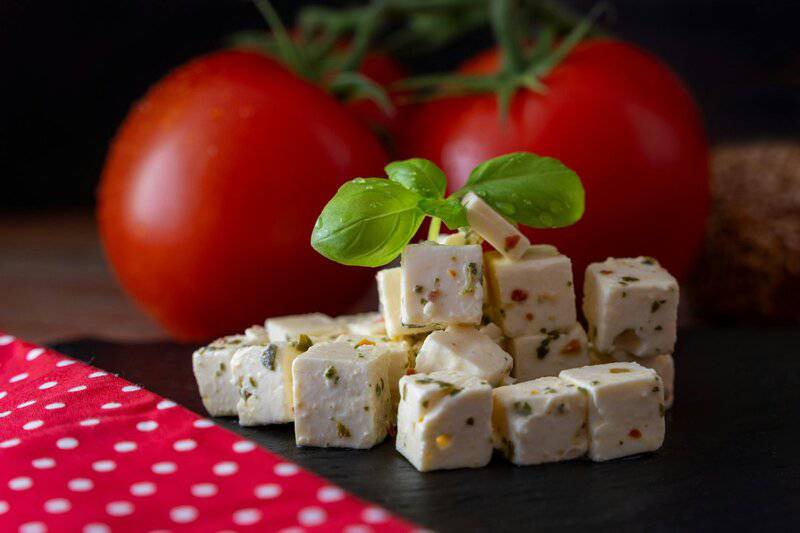
Iodine is essential for proper thyroid function, which in turn regulates metabolism, energy production, and many other hormonal processes in the body.
As we age, ensuring adequate iodine intake becomes particularly important since thyroid imbalances can affect everything from weight to mental clarity and cardiovascular health.
Seniors with insufficient iodine may experience fatigue, weight changes, or cognitive issues.
Iodized salt is the most common and effective way to meet iodine needs, as just a small amount added to meals can prevent deficiency.
Dairy products such as milk, yogurt, and cheese contain naturally occurring iodine, making them a reliable source for most people.
Seafood—including fish, shrimp, and seaweed—offers concentrated iodine, along with other minerals beneficial for seniors.
The American Thyroid Association emphasizes the importance of consistent iodine intake, especially as dietary habits change with age.
By incorporating iodized salt in moderation and enjoying diverse iodine-rich foods, seniors can help safeguard thyroid health and maintain steady metabolism.
18. Vitamin K
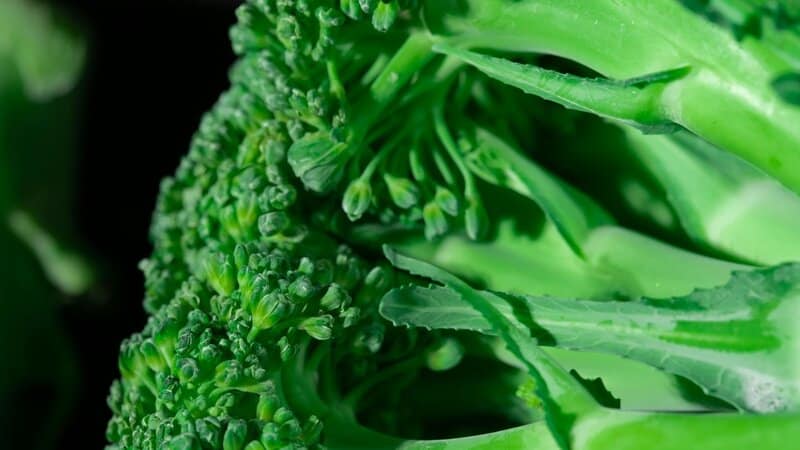
Vitamin K is indispensable for healthy blood clotting and maintaining strong bones, both of which become increasingly important with age.
This fat-soluble vitamin activates proteins involved in clotting, helping to prevent excessive bleeding from minor cuts or injuries.
It also supports bone mineralization, reducing the risk of osteoporosis and fractures in seniors.
Green leafy vegetables—such as kale, spinach, and broccoli—are among the richest sources of vitamin K1, making them a staple for senior nutrition.
Fermented foods like natto (fermented soybeans) and certain cheeses provide vitamin K2, which may play a unique role in bone metabolism.
Herbs such as parsley and basil can be easily added to meals for an extra vitamin K boost.
The NIH Vitamin K Guide notes that while vitamin K deficiency is rare, certain medications and health conditions can impact absorption.
Seniors should talk with their doctor before making significant dietary changes, especially if taking blood thinners.
Including a variety of vitamin K-rich foods supports bone strength and circulatory health as we age.
19. Copper
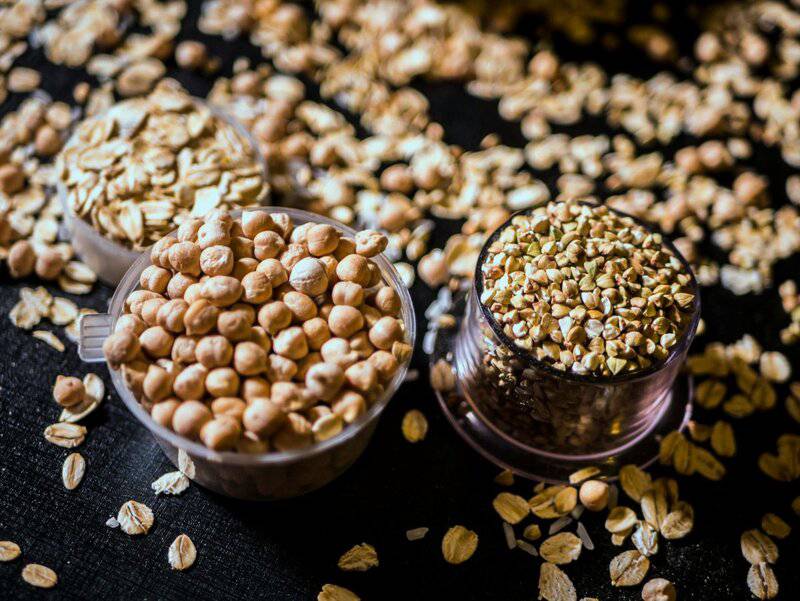
Copper is a trace mineral that plays a crucial role in energy production, immune defense, and maintaining healthy connective tissues.
It helps enzymes convert food into usable energy, supports the formation of red blood cells, and contributes to the body’s antioxidant defenses.
For seniors, getting enough copper is essential for staying energized, supporting immune resilience, and ensuring the proper function of nerves and blood vessels.
Nuts such as cashews, almonds, and pecans are flavorful, convenient sources of copper.
Shellfish—especially oysters and crab—are among the highest copper-containing foods, offering a nutrient-rich protein option.
Whole grains like barley, quinoa, and whole wheat bread supply copper while promoting heart and digestive health.
The Linus Pauling Institute highlights copper’s importance for seniors and notes that deficiency—though rare—can lead to fatigue, immune weakness, and neurological issues.
By including a variety of copper-rich foods in their diet, older adults can help maintain energy and overall wellness throughout the aging process.
20. Phosphorus

Phosphorus is a key mineral for building and maintaining strong bones and teeth, working in tandem with calcium to give the skeletal system its structure.
Beyond bone health, phosphorus is necessary for energy production at the cellular level and helps form cell membranes, making it fundamental for nearly every cell in the body.
For seniors, getting enough phosphorus supports bone density, muscle function, and the repair of body tissues.
Dairy products like milk, cheese, and yogurt are rich in phosphorus and easily incorporated into daily meals.
Fish—such as salmon, tuna, and haddock—provides high-quality protein and a substantial phosphorus boost.
Poultry and lean meats are other excellent sources, making it easy to meet phosphorus needs through a balanced diet.
According to the NIH Phosphorus Fact Sheet, most adults meet their needs through food, but seniors with kidney issues should monitor intake closely.
Including a range of phosphorus-rich foods helps maintain bone strength, cellular health, and overall vitality as we age.
21. Manganese

Manganese is an essential trace mineral important for metabolism and bone development.
It acts as a cofactor for many enzymes involved in processing carbohydrates, amino acids, and cholesterol, making it vital for energy production and overall metabolic health.
Manganese also plays a role in the formation of bone and connective tissue, which helps support mobility and skeletal strength as we age.
Nuts—including pecans, hazelnuts, and walnuts—are excellent, easy-to-snack-on sources of manganese.
Whole grains like brown rice, oatmeal, and whole wheat bread supply manganese while supporting digestive and cardiovascular health.
Leafy green vegetables such as spinach and kale add manganese along with fiber and other key nutrients.
The NIH Manganese Fact Sheet notes that while manganese deficiency is rare, maintaining adequate intake is important for bone integrity and metabolic balance in seniors.
Focusing on a diverse, plant-rich diet ensures healthy manganese levels and supports long-term well-being.
22. Chromium
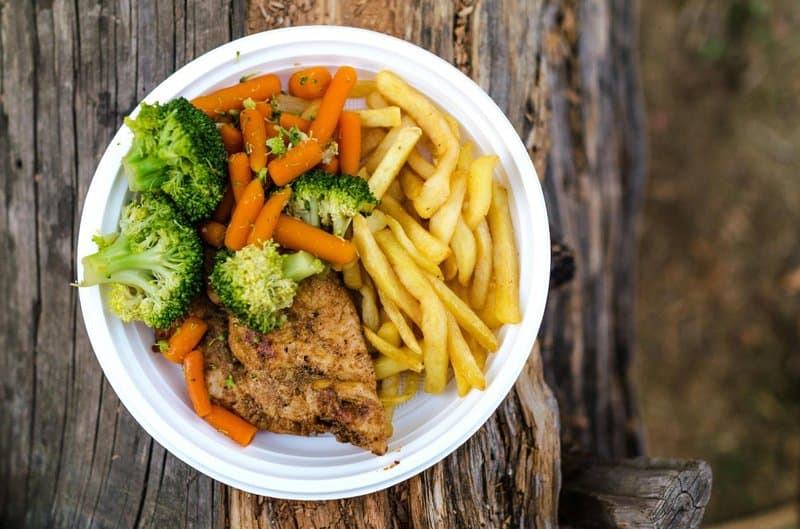
Chromium is a trace mineral that plays an important role in supporting insulin action and regulating blood sugar levels.
As we age, the body’s ability to manage glucose can decline, making chromium particularly valuable for seniors wanting to maintain healthy metabolism and energy.
Proper chromium intake may help enhance insulin sensitivity and support balanced blood sugar, which is crucial for reducing the risk of type 2 diabetes and related complications.
Whole grains—including whole wheat bread, oats, and barley—are among the best dietary sources of chromium.
Broccoli is one of the most chromium-rich vegetables, and its versatility makes it easy to add to salads, stir-fries, and soups.
Potatoes, especially when eaten with the skin, provide a natural boost of chromium along with fiber and other minerals.
The NIH Chromium Fact Sheet suggests that most adults can meet their chromium needs through a varied diet, but seniors should be mindful of processed foods, which tend to be low in this mineral.
Incorporating more whole grains and vegetables supports healthy blood sugar regulation and overall metabolic health.
23. Choline

Choline is an essential nutrient especially important for brain function and liver health.
It plays a key role in the production of acetylcholine, a neurotransmitter involved in memory and muscle control, and helps maintain the structural integrity of cell membranes.
As we age, choline becomes even more critical for supporting cognitive sharpness and preventing fatty liver disease—a condition that can become more common in seniors.
Eggs—particularly the yolks—are among the most concentrated sources of choline, making them a simple and accessible option for most diets.
Beef liver is an exceptionally rich source, offering more choline per serving than almost any other food.
Soybeans and soy products such as tofu and edamame provide a plant-based choline boost, suitable for vegetarians and vegans.
According to the Harvard School of Public Health, many older adults don’t get enough choline, which may impact brain health and liver function over time.
Including choline-rich foods regularly supports memory, mental clarity, and overall organ health throughout the senior years.
24. Biotin

Biotin, also known as vitamin B7, is essential for energy metabolism and maintaining healthy skin, hair, and nails.
It acts as a coenzyme in the breakdown of carbohydrates, fats, and proteins, helping the body convert food into usable energy.
For seniors, biotin supports cellular renewal, can help reduce skin dryness, and may contribute to stronger nails and hair—areas that often require extra attention with age.
Eggs, especially the yolks, are a rich and natural source of biotin. Cooking eggs thoroughly helps optimize biotin absorption.
Nuts such as almonds, walnuts, and peanuts provide a plant-based source of biotin, along with beneficial fats and protein.
Whole grains including oats, barley, and whole wheat bread deliver biotin as well as other B vitamins and fiber for overall health.
The NIH Biotin Fact Sheet notes that while biotin deficiency is rare, ensuring a varied diet helps support skin health, metabolism, and vitality in the senior years.
Including biotin-rich foods regularly is a simple step toward looking and feeling your best.
25. Vitamin B6

Vitamin B6 is a water-soluble vitamin crucial for brain health and immune function.
It assists in the creation of neurotransmitters, supports mood regulation, and helps the body produce antibodies to fight illness.
Seniors often require more vitamin B6 due to age-related changes in metabolism and nutrient absorption, making this nutrient especially important for maintaining mental clarity and immune resilience.
Poultry such as chicken and turkey is a top source of vitamin B6, easily incorporated into a variety of meals.
Fish like salmon and tuna not only provide B6 but also complement other brain-boosting nutrients.
Potatoes and other starchy vegetables offer a plant-based source of vitamin B6 and can be enjoyed in soups, stews, or as sides.
Non-citrus fruits such as bananas and avocados add variety and extra B6 to your diet.
The NIH Vitamin B6 Fact Sheet explains that a balanced diet including these foods can help meet daily needs and support cognitive and immune health for seniors.
Regularly including vitamin B6-rich foods helps promote vitality and well-being throughout the aging process.
26. Niacin (Vitamin B3)

Niacin, also known as vitamin B3, is vital for energy production and DNA repair, two functions that are particularly important as we get older.
This water-soluble vitamin helps convert food into energy, supports healthy skin, and assists in the repair and maintenance of our genetic material.
Seniors who maintain adequate niacin levels benefit from improved metabolism, robust cell renewal, and reduced risk of age-related health issues.
Meats such as chicken, turkey, and lean beef are rich in niacin and easy to add to a balanced diet.
Peanuts and peanut butter are plant-based sources, providing both niacin and healthy fats for sustained energy.
Mushrooms offer a unique, low-calorie way to boost niacin intake, and are versatile in a variety of dishes from salads to stir-fries.
The NIH Niacin Fact Sheet recommends getting niacin from a variety of foods rather than supplements, as excessive supplementation can have side effects.
Regularly including niacin-rich foods helps support energy metabolism, cellular health, and overall vitality in the senior years.
27. Riboflavin (Vitamin B2)
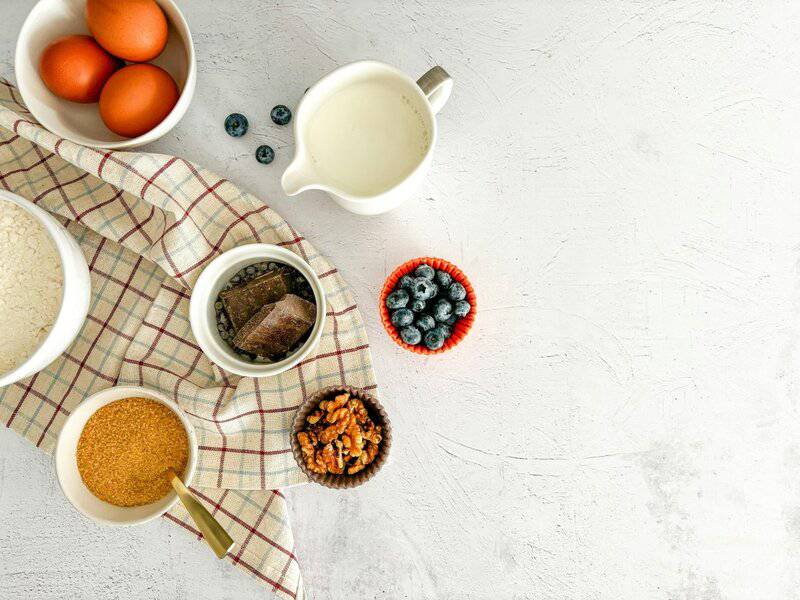
Riboflavin, or vitamin B2, is essential for converting food into energy and supporting cellular health.
It acts as a coenzyme in numerous metabolic pathways, helping the body break down carbohydrates, fats, and proteins efficiently.
Riboflavin also plays a crucial role in maintaining healthy skin, eyes, and nerve function, all of which are especially important for seniors seeking to maintain vitality and independence.
Dairy products such as milk, yogurt, and cheese are among the richest and most accessible sources of riboflavin.
Eggs provide riboflavin alongside other important nutrients for overall wellness.
Lean meats, including beef and pork, add variety and help ensure adequate intake of this critical B vitamin.
According to the NIH Riboflavin Fact Sheet, most people can meet their riboflavin needs through a balanced diet, but seniors should prioritize these foods to support energy, clear vision, and cell repair.
Ensuring regular intake of riboflavin-rich foods helps protect against fatigue and supports healthy aging.
28. Pantothenic Acid (Vitamin B5)

Pantothenic acid, also known as vitamin B5, is vital for metabolism and the synthesis of hormones.
This water-soluble vitamin is a key component of coenzyme A, which is necessary for breaking down carbohydrates, fats, and proteins into usable energy.
In addition to fueling the body, pantothenic acid supports the production of adrenal hormones and aids in the repair of tissues—functions that are especially relevant for seniors aiming to preserve energy and resilience.
Chicken is a versatile, lean protein source that offers an abundance of pantothenic acid.
Whole grains such as brown rice, oats, and whole wheat bread provide B5 along with fiber and other nutrients for digestive health.
Avocados are a unique, plant-based source of pantothenic acid and contribute healthy fats for heart and brain support.
The NIH Vitamin B5 Fact Sheet highlights the importance of a well-rounded diet rich in B vitamins for optimal health.
Regularly incorporating pantothenic acid-rich foods helps boost energy, support hormonal balance, and promote overall wellness in older adults.
29. Thiamin (Vitamin B1)
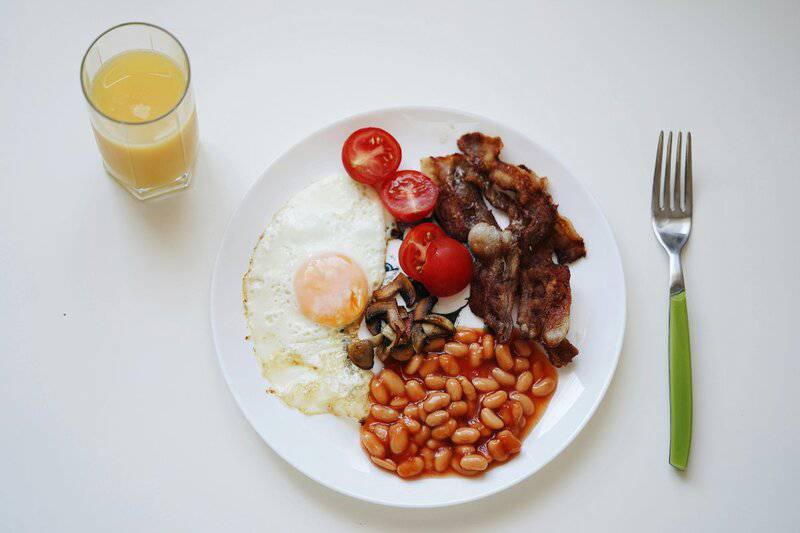
Thiamin, or vitamin B1, is crucial for energy metabolism and proper nerve function.
This water-soluble B vitamin helps the body convert carbohydrates into energy, fueling muscles, the brain, and the nervous system.
Thiamin is especially important for seniors, as efficient energy use supports mental clarity, physical activity, and overall well-being as we age.
Deficiency can lead to fatigue, muscle weakness, and impaired neurological function.
Pork is one of the richest sources of thiamin, making it a great protein choice for older adults.
Sunflower seeds provide a convenient, plant-based way to add thiamin and healthy fats to snacks and salads.
Beans—including black beans, navy beans, and lentils—offer thiamin along with fiber and protein for balanced nutrition.
The NIH Thiamin Fact Sheet notes that a varied diet including these foods helps meet daily needs and prevents deficiency.
By prioritizing thiamin-rich foods, seniors can support nerve function, boost energy, and safeguard their independence and vitality.
30. Vitamin B7 (Biotin)
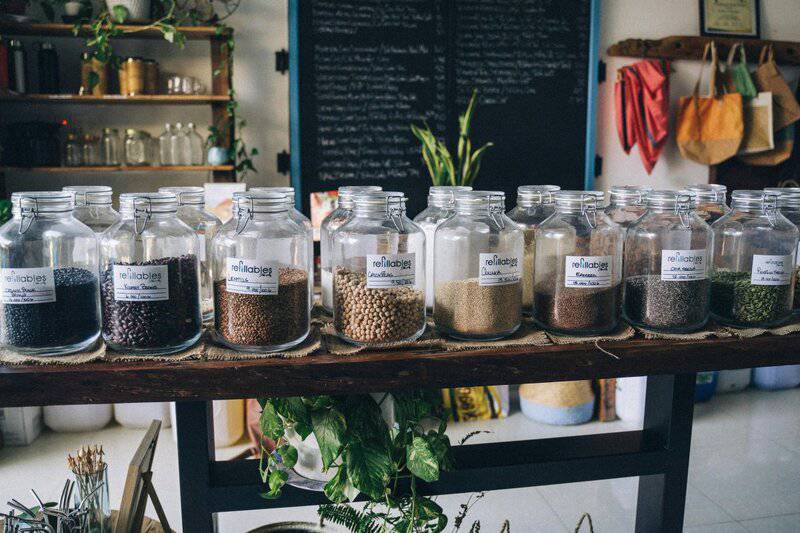
Vitamin B7, commonly known as biotin, is celebrated for its key role in supporting healthy hair, skin, and nails.
This water-soluble B vitamin acts as a coenzyme in the metabolism of fats, carbohydrates, and proteins, helping the body produce energy efficiently.
For seniors, adequate biotin intake can make a noticeable difference in the strength of hair, smoothness of skin, and resilience of nails, which often show signs of aging first.
Eggs, particularly the yolks, are among the best natural sources of biotin and can easily be included in regular meals.
Nuts—such as almonds, walnuts, and pecans—deliver biotin as well as healthy fats, making them a nutritious snack option.
Legumes like peanuts, soybeans, and lentils provide plant-based biotin, supporting skin and hair health alongside other essential nutrients.
The NIH Biotin Fact Sheet offers additional information about meeting daily biotin needs through food.
By enjoying a diverse, nutrient-rich diet that includes biotin sources, older adults can help maintain a youthful appearance and healthy metabolism as they age.
31. Lycopene
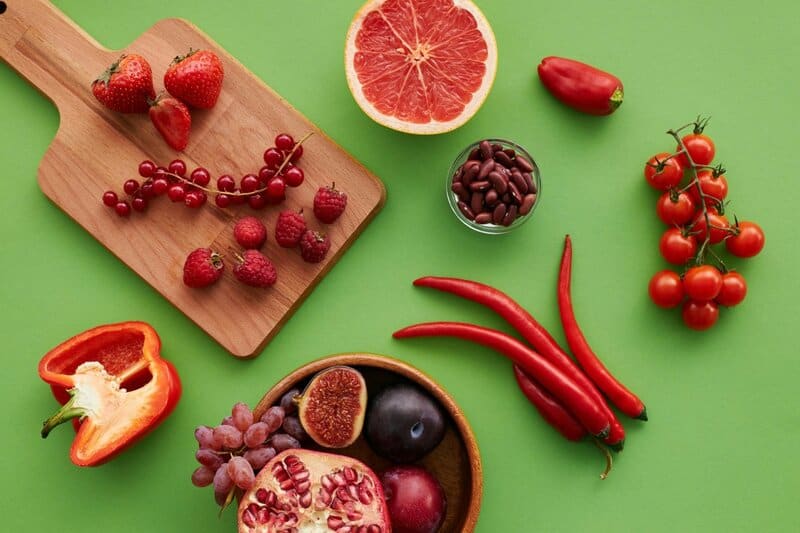
Lycopene is a potent antioxidant found in red and pink fruits and vegetables, renowned for its ability to neutralize free radicals and protect cells from damage.
Research suggests that lycopene may offer protective benefits against certain cancers, particularly prostate and lung cancer, as well as support heart health.
As we age, including antioxidant-rich foods like those containing lycopene can help combat oxidative stress and promote long-term wellness.
Tomatoes—whether fresh, cooked, or in sauces—are the most concentrated and widely available source of lycopene.
Watermelon is a sweet, hydrating fruit that delivers a significant lycopene boost, especially during summer months.
Pink grapefruit and guava also provide lycopene, offering variety and color to fruit salads and snacks.
The American Cancer Society highlights the potential of lycopene as part of a balanced diet rich in fruits and vegetables.
Regularly enjoying lycopene-rich foods helps support cellular health and may lower the risk of chronic disease in seniors.
32. Lutein and Zeaxanthin

Lutein and zeaxanthin are carotenoids known for their powerful support of eye health, especially as we age.
These nutrients accumulate in the retina and lens, where they help filter harmful blue light and protect eye tissues from oxidative damage.
Studies show that a diet rich in lutein and zeaxanthin may reduce the risk of age-related macular degeneration and cataracts, two leading causes of vision loss in seniors.
Kale and spinach are among the most concentrated sources, providing a substantial boost of these eye-supporting carotenoids.
Corn and other yellow vegetables, such as yellow peppers, offer additional dietary variety and carotenoid content.
Eggs are unique, as the fat in the yolk enhances the absorption of lutein and zeaxanthin, making them especially beneficial for eye health.
The American Optometric Association recommends including these nutrients regularly for optimal vision protection.
By enjoying a colorful, plant-rich diet along with eggs, seniors can help safeguard their eyesight and maintain independence as they age.
33. Beta-Carotene

Beta-carotene is a powerful antioxidant and a precursor to vitamin A, essential for vision, immune function, and skin health.
Found in brightly colored fruits and vegetables, beta-carotene is converted by the body into vitamin A as needed, helping to maintain healthy eyes and support cellular protection against free radicals.
For seniors, getting enough beta-carotene can make a meaningful difference in preserving vision, boosting immunity, and promoting a radiant complexion.
Carrots are perhaps the most famous source of beta-carotene, easily added to salads, soups, or enjoyed raw as a snack.
Sweet potatoes offer a rich, satisfying way to boost beta-carotene intake, along with fiber and other nutrients.
Squash, such as butternut and acorn varieties, provides beta-carotene and adds seasonal variety to meals.
The NIH Vitamin A Fact Sheet explains that beta-carotene from foods is safe and beneficial, unlike high-dose vitamin A supplements, which can be harmful in excess.
Regularly including beta-carotene-rich foods supports healthy aging and protects against age-related decline.
34. Probiotics

Probiotics are beneficial bacteria that support gut health and bolster the immune system, which is especially important for seniors.
A balanced gut microbiome aids digestion, enhances nutrient absorption, and helps defend against harmful pathogens.
As we age, natural changes in gut flora and increased medication use can disrupt this balance, making probiotic-rich foods a valuable addition to the senior diet.
Yogurt with live and active cultures is a convenient and popular source of probiotics, providing a creamy, nutritious snack or breakfast option.
Kefir is a fermented milk drink that delivers a diverse array of probiotic strains and can be enjoyed on its own or blended into smoothies.
Fermented foods such as sauerkraut, kimchi, miso, and tempeh offer plant-based probiotic options, adding both nutrition and flavor variety.
The Cleveland Clinic emphasizes the role of probiotics in maintaining digestive harmony and supporting immune defense, especially in older adults.
Regularly enjoying probiotic foods can help seniors enhance gut health, boost resistance to illness, and improve overall well-being.
35. Flavonoids

Flavonoids are a diverse group of plant compounds celebrated for their antioxidant and anti-inflammatory properties.
These natural substances help protect cells from oxidative stress, reduce inflammation, and may lower the risk of chronic diseases such as heart disease, cancer, and cognitive decline—important considerations for seniors looking to preserve health and vitality.
Flavonoids also support blood vessel health and may enhance brain function through improved circulation.
Berries—including blueberries, strawberries, and blackberries—are packed with flavonoids and can be enjoyed fresh, frozen, or in smoothies.
Dark chocolate (with a high cocoa content) provides a delicious way to add antioxidants and flavonoids to your diet in moderation.
Onions, apples, and citrus fruits offer additional plant-based sources, making it easy to include these nutrients in everyday meals.
The Harvard Health resource highlights the benefits of a flavonoid-rich diet for healthy aging.
By regularly eating colorful fruits, vegetables, and even a little dark chocolate, seniors can harness the power of flavonoids for lasting wellness.
36. Polyphenols

Polyphenols are plant compounds renowned for their ability to support cardiovascular health and fight oxidative stress.
These antioxidants help relax blood vessels, reduce inflammation, and may lower blood pressure and cholesterol—key factors in preventing heart disease as we age.
Polyphenols also benefit brain health, support blood sugar control, and contribute to overall longevity, making them an important focus for seniors.
Green tea is rich in catechins, a type of polyphenol linked to improved heart and metabolic health. Enjoying a daily cup is a simple and soothing ritual.
Olives and extra-virgin olive oil provide hydroxytyrosol and other beneficial polyphenols that support heart and vascular wellness.
Apples offer quercetin and other polyphenols, making them a convenient, fiber-rich snack with heart-protective properties.
According to the Mayo Clinic, a diet high in polyphenol-rich foods can help reduce the risk of heart disease and promote healthy aging.
Including a variety of polyphenol sources daily can boost heart health, circulation, and overall vitality for seniors.
37. Coenzyme Q10

Coenzyme Q10 (CoQ10) is a naturally occurring antioxidant that plays a pivotal role in cellular energy production and heart health.
It is found in every cell, where it helps generate energy in the mitochondria, especially in organs with high energy demands like the heart.
As we age, natural levels of CoQ10 can decline, which may impact cardiovascular function, muscle strength, and overall vitality.
Fatty fish, such as salmon, mackerel, and sardines, are good dietary sources of CoQ10 and also provide heart-healthy omega-3s.
Organ meats like beef liver and heart contain the highest natural concentrations of CoQ10 and can be included in a balanced diet.
Supplements are available for those with low dietary intake or specific medical needs, but should be used under medical guidance.
The NIH CoQ10 Fact Sheet notes CoQ10’s potential to support heart health and energy, especially in seniors or those taking statins.
Including CoQ10-rich foods, and considering supplements when appropriate, may help maintain vitality and cardiovascular well-being with age.
38. Collagen

Collagen is the most abundant protein in the body, providing structural support for skin, joints, and bones.
As we age, natural collagen production declines, leading to signs of aging such as wrinkles, joint discomfort, and reduced bone density.
Supporting collagen intake can help seniors maintain skin elasticity, joint flexibility, and strong connective tissues, all of which are vital for mobility and quality of life.
Bone broth made from simmering animal bones and connective tissue is a traditional, nutrient-rich source of collagen peptides.
Chicken skin and fish skin contain natural collagen and can be enjoyed in moderation as part of a balanced diet.
Collagen supplements in powder or capsule form are widely available and may help support skin, joint, and bone health, especially for those with limited dietary intake.
The Mayo Clinic notes that while research on collagen supplements is ongoing, a balanced diet with collagen-rich foods can support connective tissue health.
Including collagen sources regularly may help seniors maintain mobility, youthful skin, and overall resilience as they age.
39. Antioxidants
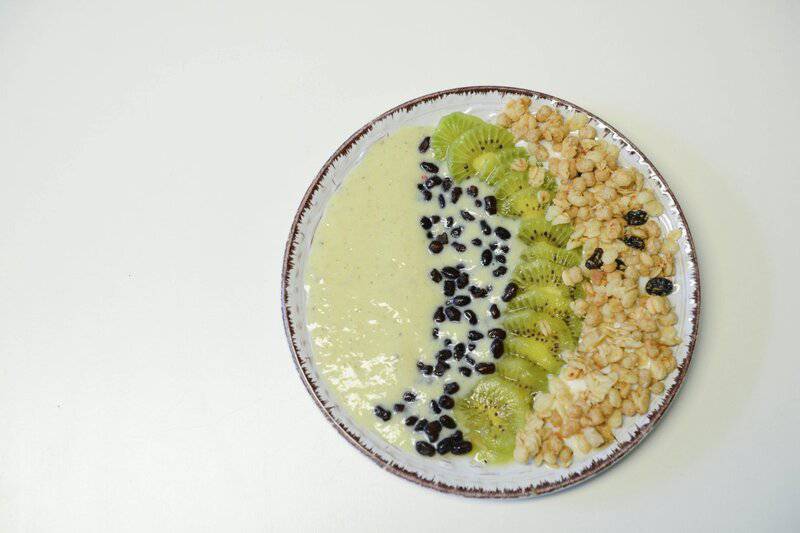
Antioxidants are compounds that protect the body from oxidative stress and cellular damage caused by free radicals.
Over time, oxidative stress can contribute to aging and increase the risk for chronic diseases such as heart disease, cancer, and cognitive decline.
For seniors, a diet rich in antioxidants is essential for defending against these age-related challenges and promoting overall wellness.
Mixed berries—including blueberries, raspberries, and blackberries—are rich in a variety of antioxidants, such as vitamin C and flavonoids.
Nuts like walnuts and pecans provide both vitamin E and plant-based antioxidants, supporting heart and brain health.
Dark leafy greens such as spinach, kale, and Swiss chard offer a potent mix of antioxidants along with important vitamins and minerals.
The NIH Antioxidants Fact Sheet highlights the broad benefits of eating a variety of antioxidant-rich foods rather than relying on supplements.
By enjoying colorful fruits, vegetables, and nuts, seniors can help combat oxidative stress and support vibrant health at every stage of aging.
40. Phytosterols

Phytosterols are plant compounds that play a significant role in managing cholesterol levels, an important consideration for heart health as we age.
These naturally occurring substances are structurally similar to cholesterol and compete for absorption in the digestive system, ultimately helping to lower total and LDL (“bad”) cholesterol.
Seniors can benefit from including phytosterol-rich foods in their diet to support cardiovascular wellness and reduce the risk of heart disease.
Nuts such as pistachios, almonds, and walnuts provide a healthy dose of phytosterols, fiber, and beneficial fats.
Seeds, including sunflower and sesame seeds, are easy to sprinkle on salads, yogurts, or cereals for an extra phytosterol boost.
Vegetable oils like canola, soybean, and corn oil, as well as specially fortified foods (such as margarines or orange juice), are additional sources.
The American Heart Association recommends incorporating phytosterols as part of a heart-healthy eating plan.
By making simple swaps and adding more nuts and seeds, seniors can naturally support healthy cholesterol and cardiovascular health.
Conclusion

A varied, nutrient-rich diet is one of the most powerful tools for healthy aging. By including a colorful array of whole foods—fruits, vegetables, lean proteins, whole grains, dairy, nuts, and seeds—seniors can meet most of their nutritional needs naturally. Simple swaps and small daily changes—like adding leafy greens, enjoying a handful of nuts, or choosing fortified foods—can make a significant difference. For tailored advice, consider consulting a registered dietitian or healthcare provider, especially when managing chronic conditions or medications. Prioritizing nutrition not only supports longevity but also helps maintain independence, energy, and a vibrant quality of life.
Disclaimer

This article is for informational purposes only and not a substitute for personalized medical advice. Always consult your healthcare provider before making significant dietary changes or starting new supplements. Your individual health needs are unique—take action with confidence by seeking professional guidance for your nutrition and well-being.





